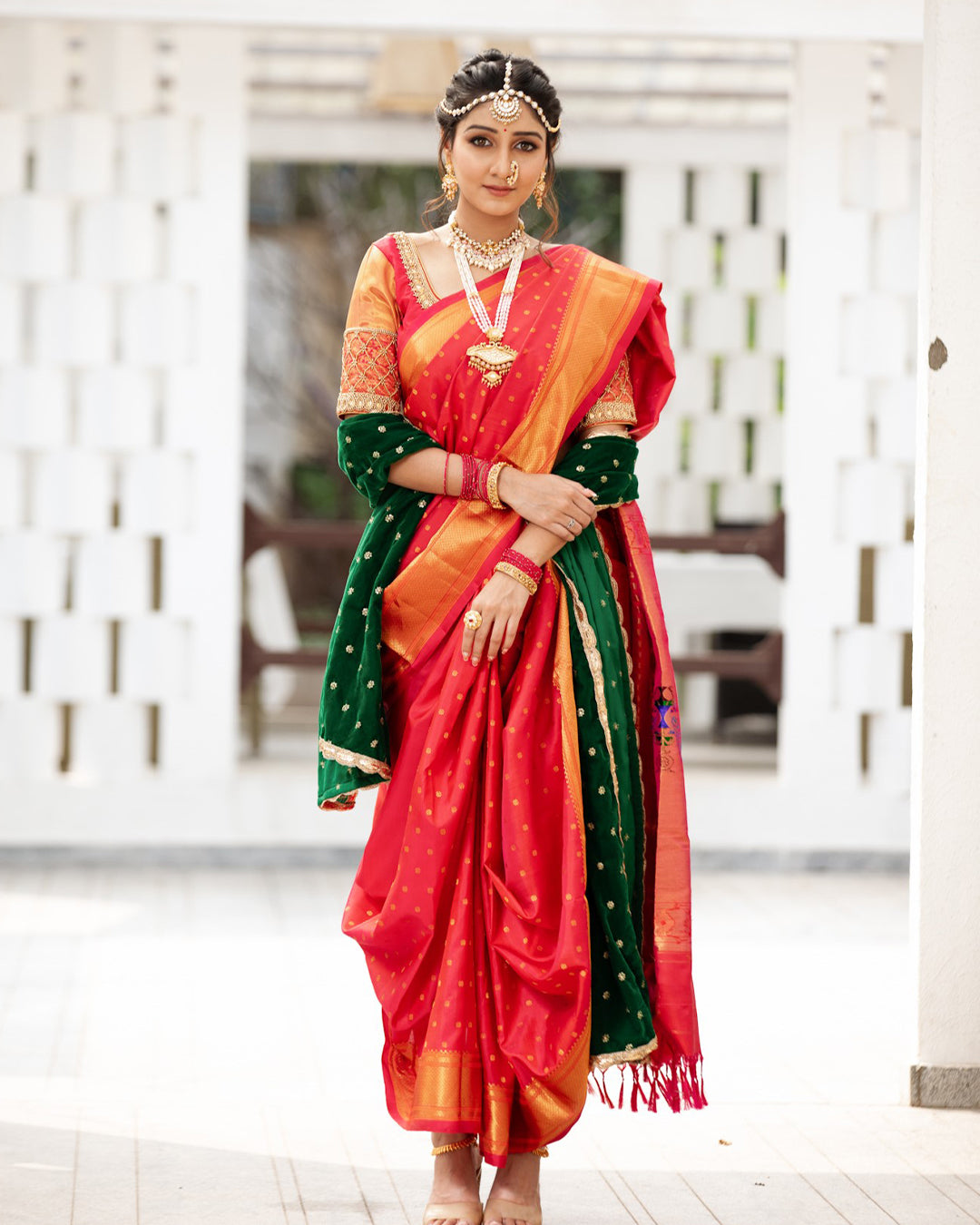Reviving Vintage Paithani Sarees: A Restoration Guide

Paithani Sarees: A Restoration Guide
A vintage Paithani saree is more than just a piece of fabric—it’s a treasure trove of history, tradition, and memories. Restoring a Paithani saree requires careful attention to its delicate silk and zari work, ensuring its original charm is revived without compromising its integrity. Here’s a step-by-step guide to restoring your vintage Paithani saree.
1. Assess the Condition of the Saree
Before starting restoration, thoroughly examine the saree:
-
Check for Damage: Look for tears, worn-out zari, faded colors, or fraying edges.
-
Identify Stains: Take note of any spots, stains, or discoloration.
-
Evaluate Fabric Strength: Test the silk's durability by gently stretching a small, inconspicuous area.
2. Cleaning the Saree
Cleaning is the first step in restoration, but it must be done with utmost care to avoid further damage.
-
Dry Cleaning:
For heavily soiled or fragile sarees, take it to a professional dry cleaner experienced in handling vintage silk and zari. -
Home Cleaning (For Minor Dirt or Stains):
-
Use cold water with a mild, silk-friendly detergent.
-
Gently dab at stains using a soft cloth or sponge. Avoid rubbing, as it can damage the delicate threads.
-
Rinse with cold water and lay the saree flat to air-dry in the shade.
3. Repairing Tears and Fraying Edges
-
Small Tears:
Use fine silk threads that match the saree’s color to hand-stitch small tears. Ensure the stitches are neat and minimal to maintain the saree’s aesthetics. -
Frayed Edges:
Reinforce the edges with matching silk fabric or a narrow border that complements the original design. -
Zari Restoration:
If the zari is damaged or tarnished, consult a professional weaver to repair or replace it. They can reweave the zari into the saree’s fabric using traditional techniques.
4. Enhancing the Colors
Over time, the colors of a vintage Paithani may fade. Reviving them requires careful dyeing:
-
Natural Dyes:
Opt for natural dyes to restore faded areas, as they are gentler on silk and align with the saree’s traditional crafting methods. -
Spot Dyeing:
For localized fading, use a small brush to apply the dye only on the affected area, blending it seamlessly with the rest of the saree.
5. Removing Wrinkles and Restoring Texture
-
Steam Ironing:
Use a steam iron on a low-heat setting. Place a thin cotton cloth over the saree to prevent direct heat exposure. -
Stretching the Fabric:
Gently stretch the fabric to restore its original texture and drape. This works well for silk that has stiffened over time.
6. Preserving the Original Design
-
Motif Restoration:
If the motifs are damaged, a skilled artisan can replicate the original patterns using hand-embroidery or weaving techniques. -
Pallu and Border Repair:
Special attention should be given to the pallu and border, as these are the highlights of a Paithani saree. Zari threads can be carefully rewoven or replaced to maintain their brilliance.
7. Storing the Restored Saree
Proper storage is crucial to preserve the restored saree:
-
Wrap the saree in a soft muslin or cotton cloth to protect it from dust and moisture.
-
Avoid hanging the saree, as it can weaken the fabric over time. Instead, fold it carefully, ensuring no sharp creases.
-
Place silica gel packets in the storage area to prevent humidity damage.
8. Professional Help for Extensive Restoration
For significant damage or intricate zari and silk repairs, it’s best to consult professional weavers or textile conservators. They have the expertise to revive even heavily damaged vintage sarees while preserving their original charm.
Tips for Preventing Further Damage
-
Avoid Direct Sunlight: Sunlight can fade colors and weaken silk.
-
Handle with Care: Always wash and handle vintage sarees gently.
-
Regular Maintenance: Air the saree every 3-4 months to prevent moisture buildup and maintain its freshness.
